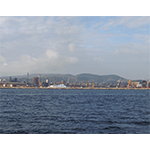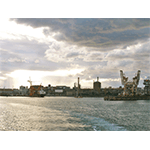Port of Falesia
|
25 |
Capital of the little homonymous state formed in 1399 after the fall of the Republic of Pisa, the city of Piombino had two landing places, the port of Falesia, which gave rise to today’s tourist and industrial port, and the little Porticciolo della Marina.
The harbour area of Falesia, today Portovecchio, of which the first news dates to the 5th century, was first and primarily a port of refuge for seafarers directed to Populonia. It later gradually assumed an increasingly more important role as a port station for the iron from the mines of Elba Island. In 1286, a tower was built to protect the port, given that it was also used as a base by the Pisan fleet. In 1465, Jacopo III Appiani had another tower and a dockyard built. In the 16th century, due to the rise of Livorno, the importance of the port of Falesia progressively decreased, also given the state of progressive decay. During the government of Elisa Bonaparte and Felice Baciocchi (1805-1814), a series of excavation projects were drawn up, but the works were never carried out. The general conditions of the area improved when, as of the second half of the 19th century, the first iron and steel industries were launched, such as La Magona d’Italia. With the growth of the iron industry, it indeed became necessary to undertake restoration and drainage works, as well as to enlarge Portovecchio to render it an efficient base where merchant vessels could land. It was outfitted with a railway in the late 19th century, and various supporting infrastructures for the metallurgical plants were realised in the early 20th century. Almost completely destroyed during World War II, it was later rebuilt along the lines of the previous port. Today, it is one of the principal docks in Italy for commercial and industrial traffic, and for the transit of passengers to Elba Island, Sardinia and Corsica.
****************************
Texts by Graziano Magrini
English translation by Victor Beard
Last update 31/gen/2008





